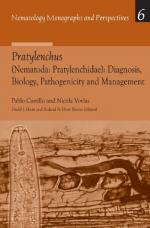|
This section contains 910 words (approx. 4 pages at 300 words per page) |

|
The Phylum Nematoda consists of the species commonly known as roundworms. There are approximately 12,000 described species, but the actual number could be many times higher. Nematode worms are extremely abundant; often, several hundred species, and as many as a million individuals, inhabit a square yard of soil. Nematodes are also extremely varied ecologically. They are found in almost every imaginable habitat, including terrestrial (land-based), freshwater, and saltwater ecosystems, as well as within other organisms as parasites. Nematodes can be herbivorous, carnivorous, or parasitic, and include both generalists (who make use of a wide variety of resources) and specialists (who make use of only particular resources). They play a particularly critical role in decomposition and nutrient cycling, where they are often the intermediate decomposers that partly break down organic materials so that they can then be dealt with by bacterial decomposers.
 A pinworm. Adult pinworms live in the large...
A pinworm. Adult pinworms live in the large...|
This section contains 910 words (approx. 4 pages at 300 words per page) |

|


